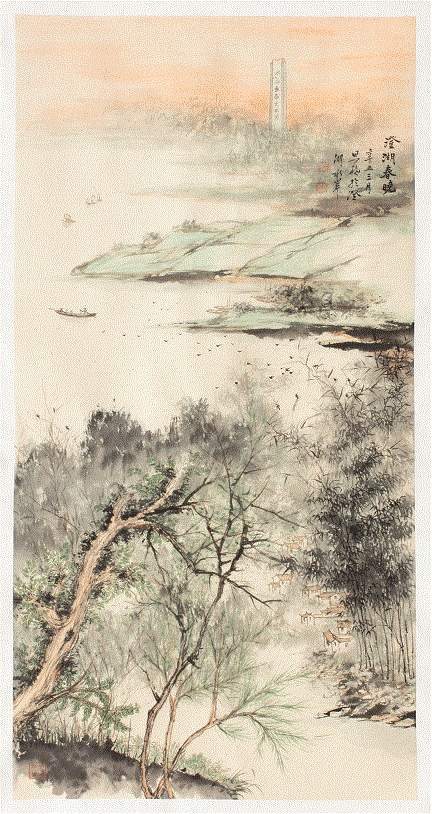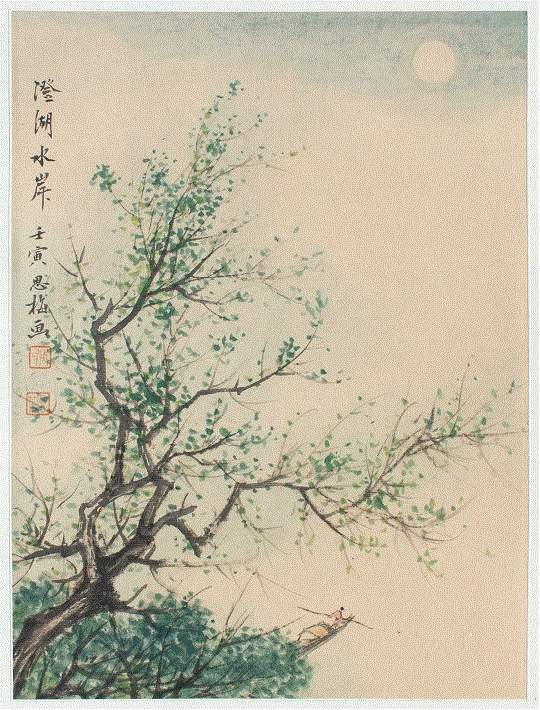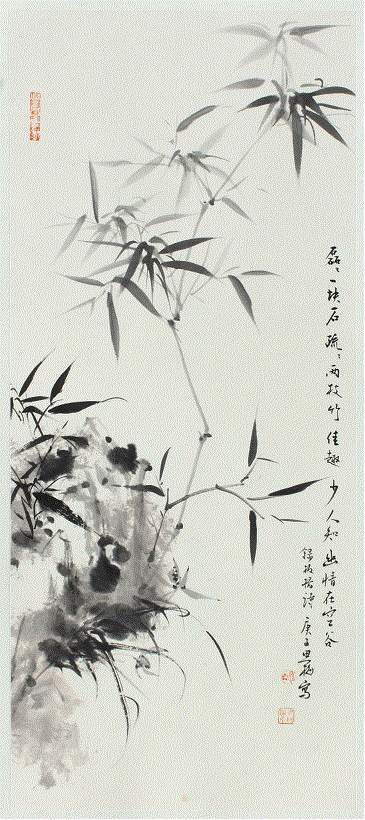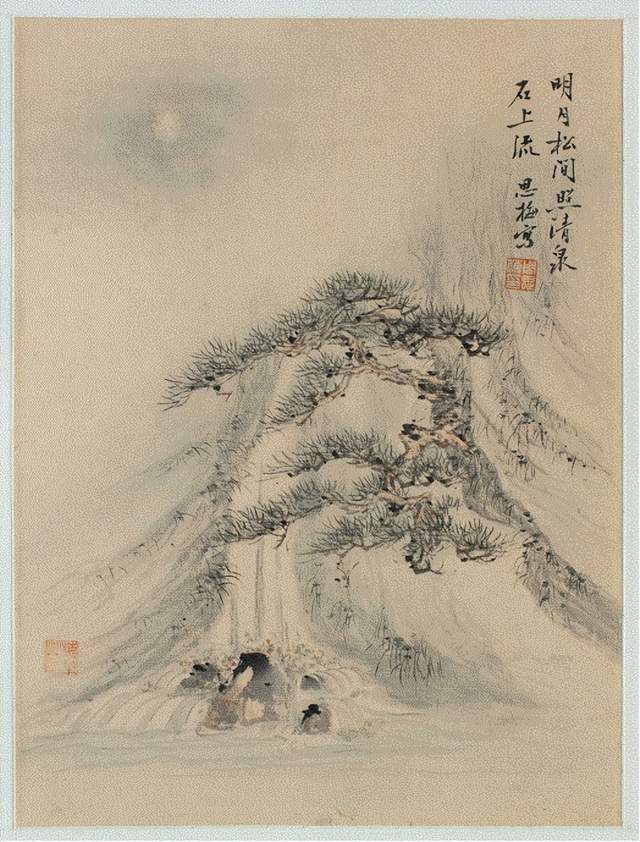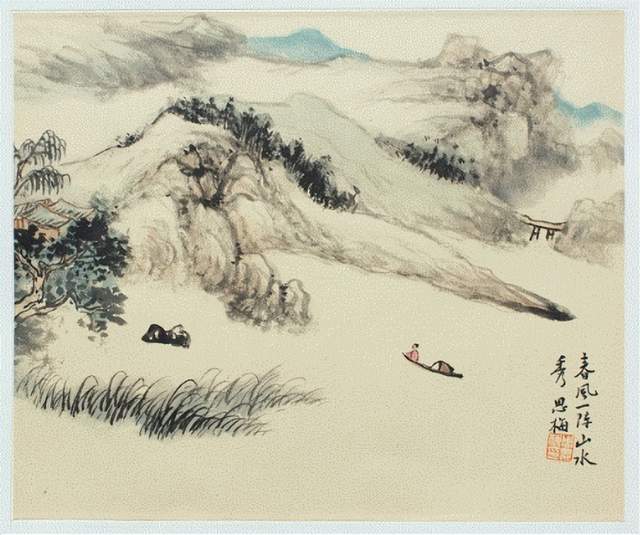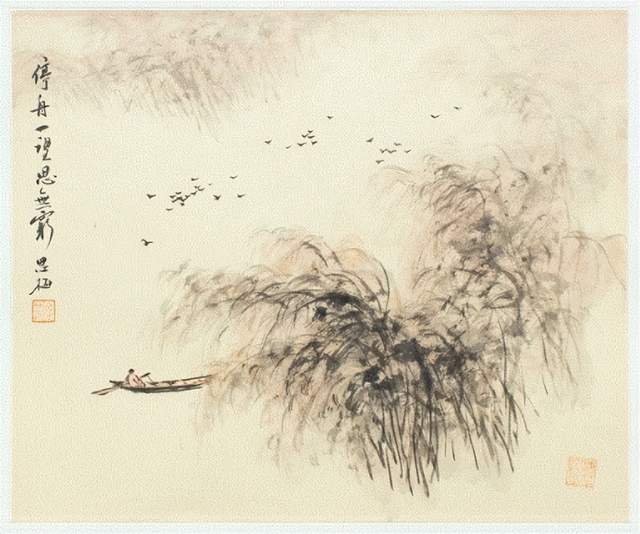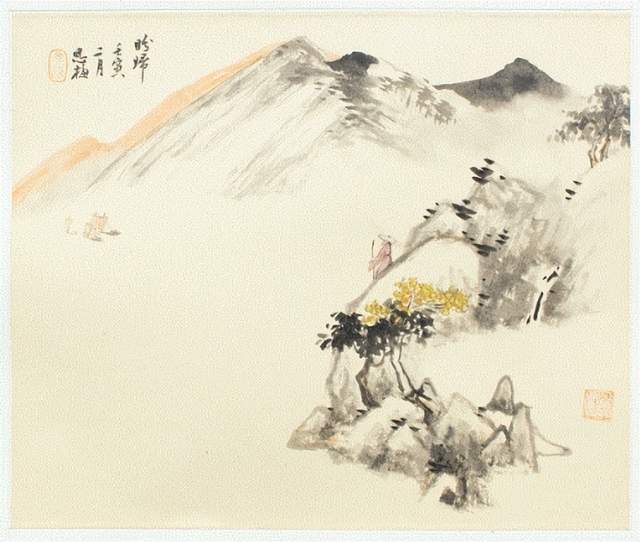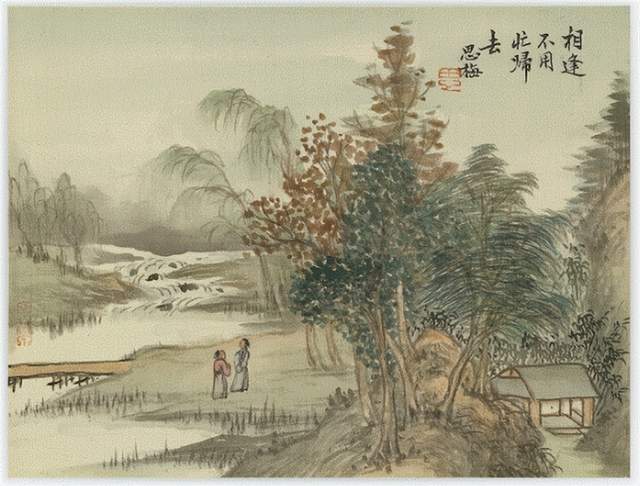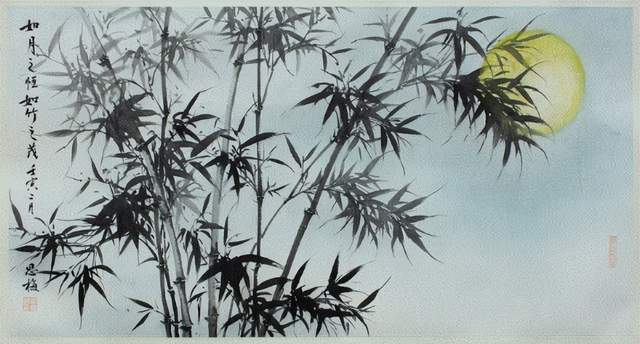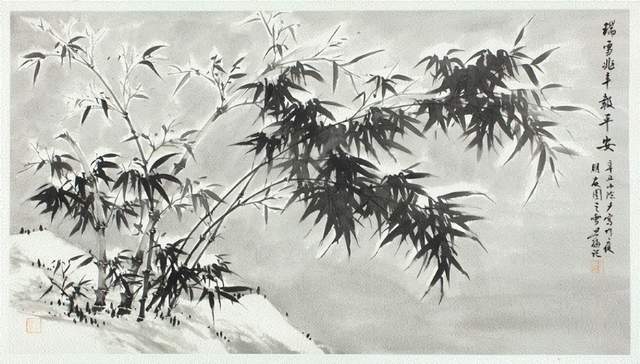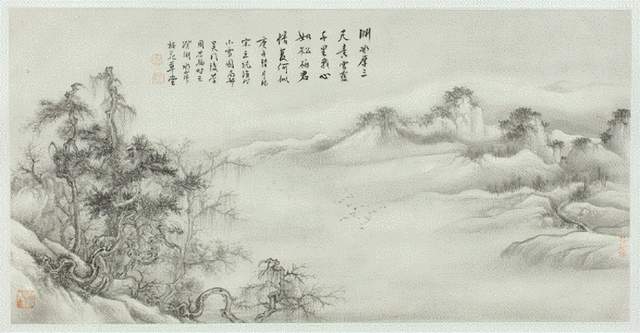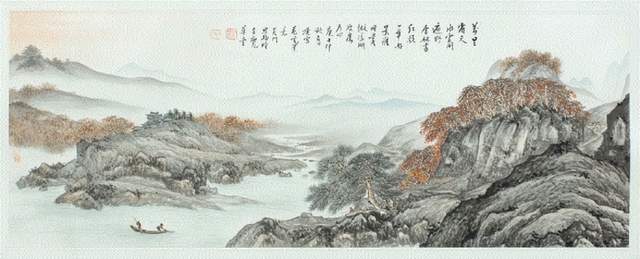周思梅,1963年出生于苏州。现为中国画院书画家,苏州市美术家协会会员,苏州市书画收藏协会理事,吴门画派学研会会员,苏州市党外知识分子联谊会理事,苏州过云楼文化研究会会员。师从费松伟、朱耕原、邵文君、徐绍青、钱定一先生学习山水,近年又深得著名画家戴敦邦先生指导。作品小楷《金刚经》长卷在泰国、马来西亚等国家及中国台湾、香港等各地巡回展出,被《书法报》《艺术博览》《艺术市场》《现代苏州》等报刊专题介绍。在北京故宫、北京荣宝斋和上海豫园等地多次举办个人书画展,作品多次参加全国大型展览。出版《周思梅书画集》《“清风梅韵”周思梅书画精选》《周思梅书小楷<金刚经>单行本》《“吴门传馨”故宫紫禁书院周思梅书画展作品集》《思梅墨迹—周思梅书画作品集》(荣宝斋出版社)等。 原荣宝斋总经理、人民美术出版社原社长、著名画家郜宗远:“周思梅女史,慕先哲之遗轨,由画入书,复由书而入画,再以画而溯书,渊源传统,笔墨雅正,诚难能可贵。思梅于吴门书法、山水、花鸟等广有深研,其得吴门书画之正脉道统,意境潇洒劲秀、明净文雅……近年又得其義父戴敦邦先生指導,更是兼收并蓄,流淌激扬,书、画、笔、墨、气、韵,浑然一体,故其画,传统飞动,酣畅华滋;其书,立骨显神,笔精墨润,一派古贤气象。”
戴敦邦先生:“古往今来,吴地文化艺术以其独特的表现形式闪耀在华夏文明、世界苑囿之中。尤其书画,一如脱俗儒家风范幽幽袭人的馨香,沁之心扉,超凡脱俗……思梅之书画确乎系出吴门正宗传承,少见女性作者的某些孱弱流露如同须眉一般……”
作家、知名文化学者韩光浩:“ 厚积薄发气韵飞动,平淡天真一片江南,无愧于吴门,有幸于传承,吴门周思梅女史以诗文书画修身洗心,清净自得。其作求‘天地、道法、笔墨’ 交合,纸上氤氲江南诗性之气象。
吴门艺道不离诗、词、书、画诸形态,其‘诗眼’乃纵横有象,物我相感。书画者化机四出,观赏者神游其间。遍览过眼丹青,思梅女史真知画脉者也。”
Zhou Simei was born in Suzhou in 1963. Now he is a painter and painter of Chinese Painting Academy, a member of Suzhou Artists Association, a director of Suzhou Painting and Calligraphy Collection Association, a member of Wu School Research Association, a director of Suzhou Non-Party Intellectuals Association and a member of Suzhou Guoyunlou Culture Research Association. He studied landscape under Fei Songwei, Zhu Gengyuan, Shao Wenjun, Xu Shaoqing and Qian Dingyi, and won the guidance of the famous painter Dai Dunbang in recent years. The long scroll of Diamond Sutra in lower case has been exhibited in Thailand, Malaysia and other countries, Taiwan Province, Hong Kong and other places in China, and has been specially introduced by newspapers such as Calligraphy Newspaper, Art Expo, Art Market and Modern Suzhou. He has held many personal painting and calligraphy exhibitions in Beijing Forbidden City, Beijing Rong Baozhai and Shanghai Yuyuan Garden, and his works have participated in many large-scale national exhibitions. He published Zhou Simei's Painting and Calligraphy Collection, Selected Works of Zhou Simei's Painting and Calligraphy in Qingfeng Mei Yun, Zhou Simei's Book in Lower Case < Diamond Sutra >, Wu Men Chuan Xin's Works of Zhou Simei's Painting and Calligraphy Exhibition in Forbidden Academy of Forbidden City, Simei Ink-Zhou Simei's Painting and Calligraphy Collection (Rong Baozhai Publishing House), etc. Gao Zongyuan, former general manager of Rong Baozhai, former president of People's Fine Arts Publishing House and famous painter, said: "Zhou Simei's female history, admiring the legacy of sages, goes from painting to book, from book to painting, and then goes back to book by painting, which originated from tradition, and is elegant and upright in pen and ink, which is really commendable. Simei has a deep research on Wumen calligraphy, landscapes, flowers and birds, etc. It has won the orthodoxy of Wumen painting and calligraphy, and its artistic conception is natural and unrestrained, bright and elegant... In recent years, it has been pointed out by its righteous father, Mr. Dai Dunbang, and it is eclectic and flowing. Books, paintings, pens, ink, gas and rhyme are integrated, so its paintings are traditionally flying and hearty; His books, with their bones showing their gods, and their pens are fine and moist, are full of ancient sages. "
Mr. Dai Dunbang: "Throughout the ages, Wu culture and art have shined in Chinese civilization and world gardens with its unique expression. In particular, painting and calligraphy, just like the faint fragrance of refined Confucian style, is refreshing and extraordinary... Simei's painting and calligraphy is indeed the authentic inheritance of Wumen, and some weak outpouring of rare female authors is like a man... "
Han Guanghao, a writer and well-known cultural scholar, said: "The accumulation is thin, the charm is flying, and it is plain and innocent in the south of the Yangtze River. It is worthy of Wumen, and it is fortunate to inherit it. The female history of Zhou Simei in Wumen cultivates self-cultivation with poetry, painting and calligraphy, and is clean and complacent. His work seeks the intersection of" heaven and earth, Taoism, pen and ink ", and the poetic atmosphere of Jiangnan is dense on paper.
Wumen's artistic way is inseparable from poetry, words, books and paintings, and its "poetic eyes" are vertical and horizontal images, and things and me feel each other. Painters and painters turn into machines, while viewers wander in the meantime. Looking at Danqing all over the eyes, those who think of Mei's female history really know the pulse of painting are also. "
